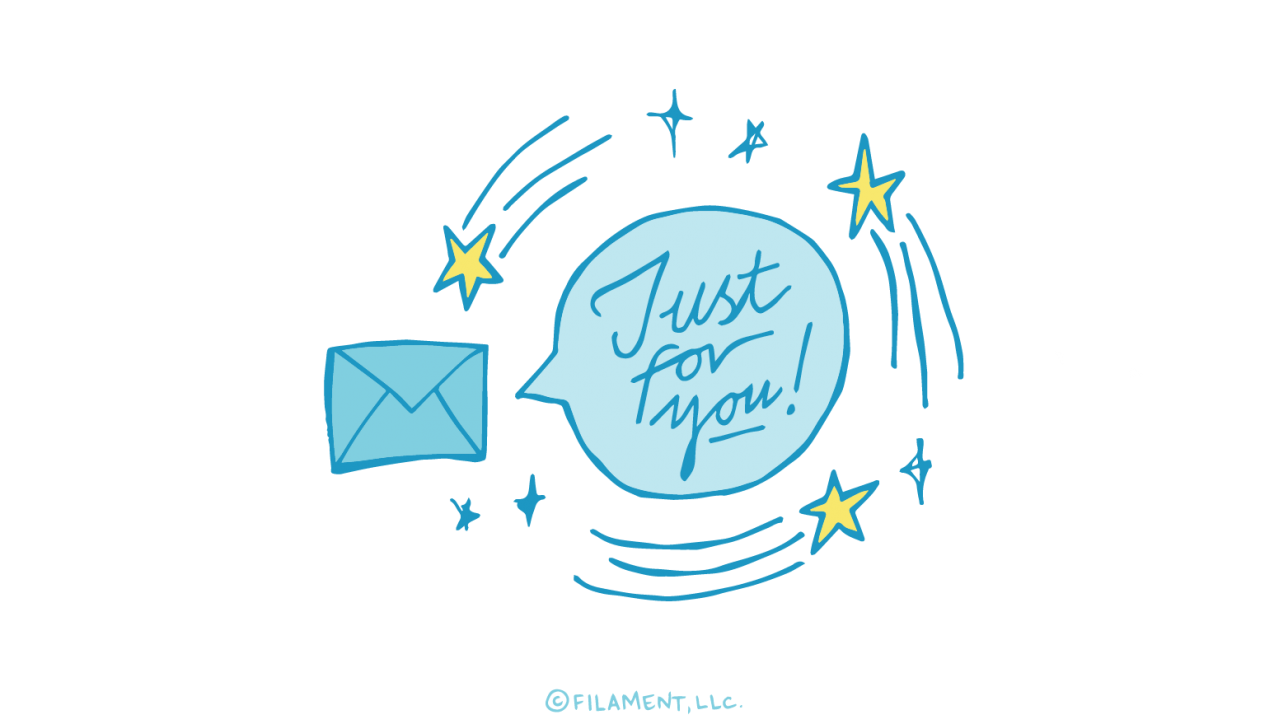We’ve said it before, and we’ll say it again, personalization is the future of email marketing. Depending on the industry, personalized subject lines can boost open rates by 41%, transaction rates by 49%, and revenue, per email, by 73%.1 Email personalization via segmentation brings dramatic results as well. In a study by MailChimp, segmented campaigns got 63.75% more clicks than non-segmented campaigns.2
Despite personalization’s clear impact on email marketing success, many marketers aren’t putting it into play. So today we’re going to offer some tips to help you start integrating personalization into your email marketing strategy today. If you’re already practicing email personalization, you’ll still find a few good rules of thumb as well as new best practices to put into place.
Data
You might think you don’t have enough information about your subscribers to create personalized emails. However, chances are you have data at your fingertips that you haven’t utilized. If a subscriber has bought something from you, you may well have their geographic location (via their shipping and/or billing address), interests based on past purchases, and their name, all of which can be useful in personalizing your campaigns. While you start collecting subscriber information, use what you have, even if it’s only your subscribers’ first names, as in this example from Sixt:
![]()

Email Sign-ups
If you don’t have a lot of information about your subscribers to begin with, update your email sign-up form to make sure you’re collecting information that’ll be useful for segmenting and creating content later on. Things like name, gender, geographic location, interests/concerns (depending on your industry) will be helpful down the road when you’re segmenting your list and crafting content for specific segments.
Segmentation
There are lots of different ways to segment your email list, from transactional data to job title. Check out the list below for a several ideas:
- Geographic location
- Gender
- Age
- Job title
- Company size
- Interests
- Transactional data (past purchases, plan level, total amount spent in the last 6 months, etc.)
- Behavioral data (active vs. inactive, customer vs. prospect, etc.)
Here’s an example from Williams-Sonoma that uses transactional data to create a personalized abandoned cart email:
![]()


Like many retailers, Crate and Barrel uses behavioral data to segment out active customers from the inactive ones in order to create personalized win-back email campaigns, as in the example below.
![]()

Email Content
While you’re working on sorting out your data and segmenting your list, you can start creating content that’s well tailored to your target persona. Do this by personalizing your tone and language in your email marketing. It’s just as important as apt use of dynamic tags and proper segmentation. Check out this example from Nasty Gal, which is expertly tailored to Nasty Gal’s target audience:


Conclusion
Email personalization is key for creating engaging email experiences and fostering loyalty. It leads to a deeper, more meaningful relationship with subscribers because you’re sending them more of what they want and because you’re putting a human face on both your emails and your brand. Thankfully, email personalization doesn’t have to be complicated. Today’s tools make it easy to send targeted, personal—and therefore engaging—emails.
What’s your favorite email personalization strategy? Share it in the comments section below.
Get in touch with Filament to learn innovative new ways to create personalized email campaigns for your subscribers.
1. http://www.marketingsherpa.com/article/chart/personal-subject-lines
2. https://mailchimp.com/resources/research/effects-of-list-segmentation-on-email-marketing-stats/



Comments (2)